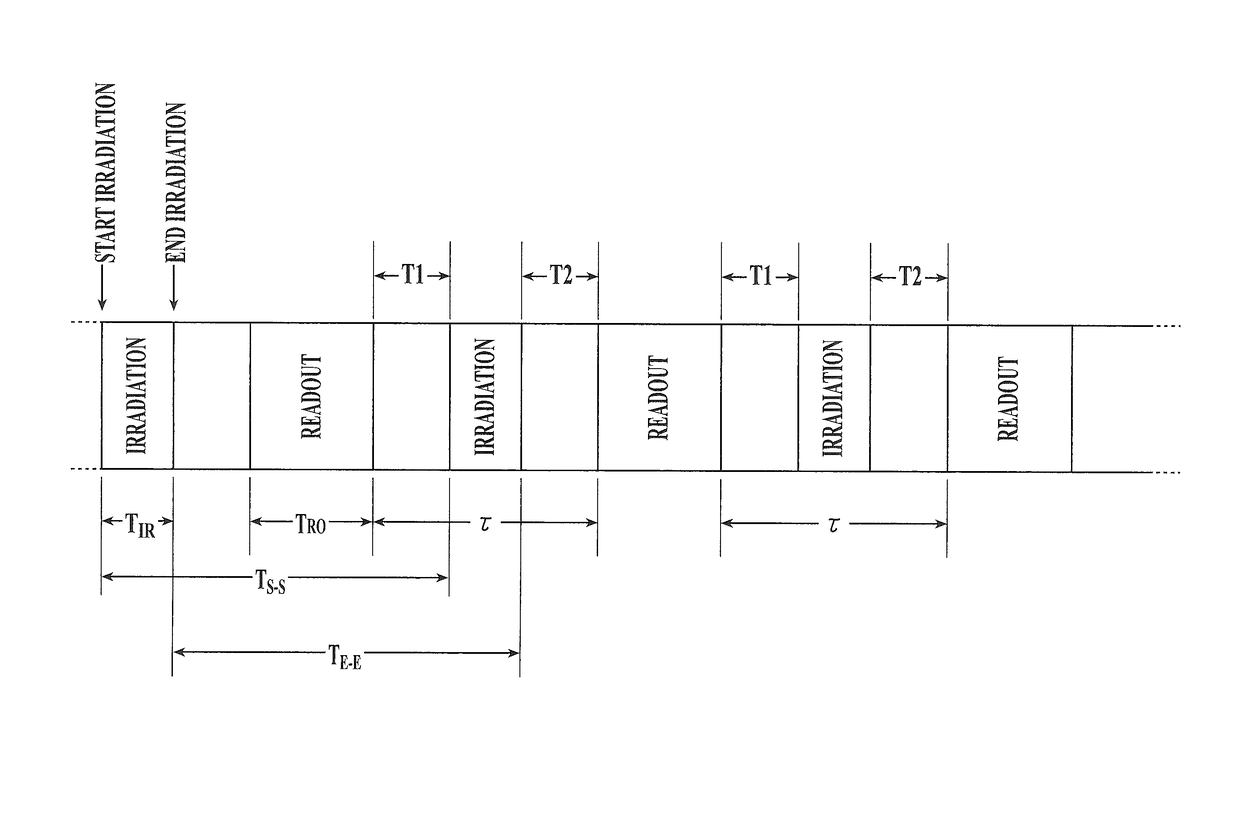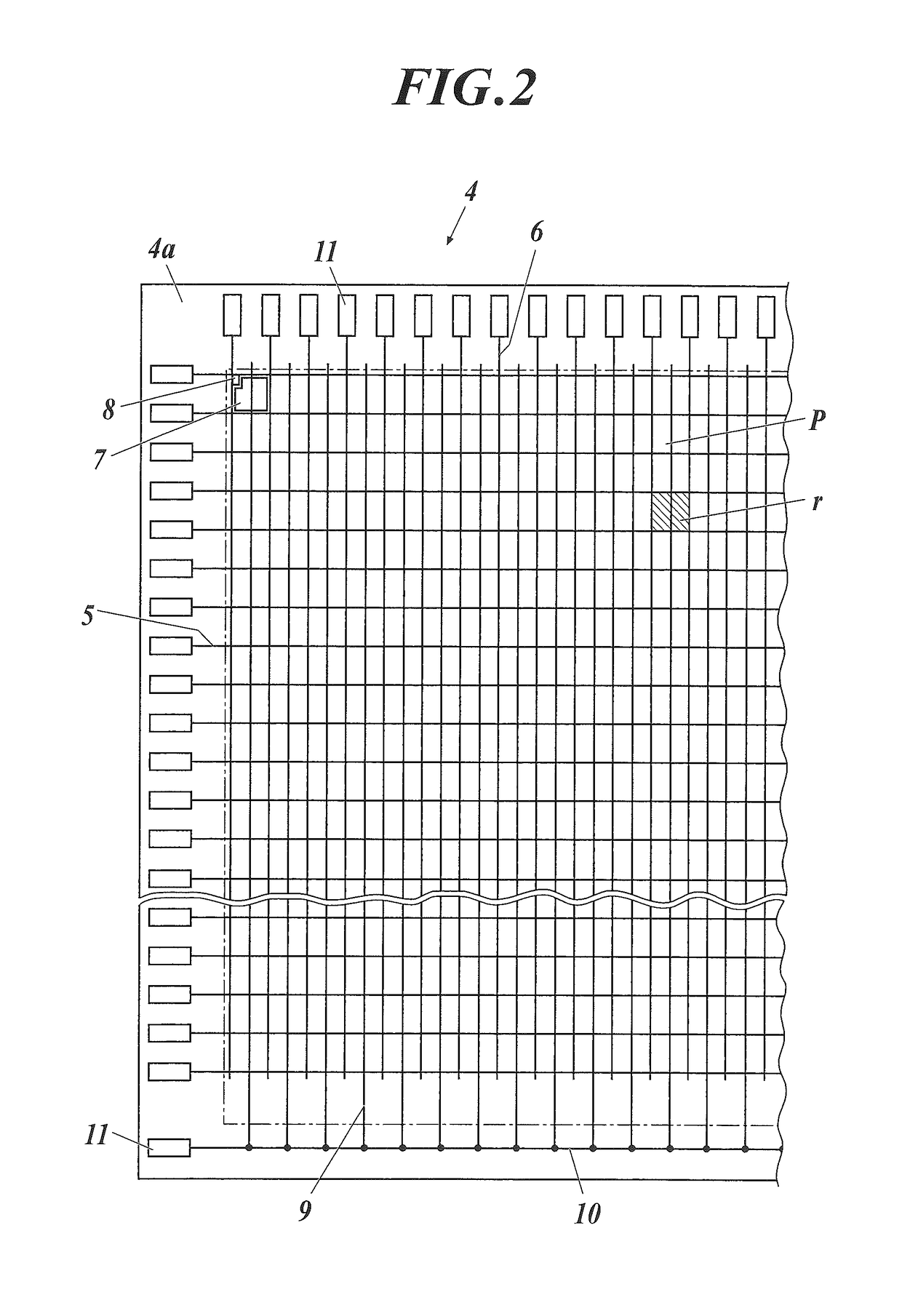Radiographic image capturing apparatus and radiographic image capturing system
a radiographic image and capturing apparatus technology, applied in the field of radiographic image capturing apparatus and radiographic image capturing system, can solve the problems of inability to correctly readout image data d, inability to achieve and inability to achieve the establishment of an interface between the two
- Summary
- Abstract
- Description
- Claims
- Application Information
AI Technical Summary
Benefits of technology
Problems solved by technology
Method used
Image
Examples
first embodiment
[First Embodiment]
[Structure and Other Details of Radiographic Image Capturing Apparatus]
[0058]The structure and other details of a radiographic image capturing apparatus of this embodiment will be described. FIG. 1 is a cross-sectional view of the radiographic image capturing apparatus of this embodiment. FIG. 2 is a plan view illustrating the structure of a substrate of the radiographic image capturing apparatus. In FIGS. 1 and 2 and other drawings, the components in the apparatus are not always accurately expressed in relative size, position, or other respects as in the actual apparatus. In the following description, “above” or “below”, i.e., an expression associated with the vertical direction is relative to a radiographic image capturing apparatus 1 disposed on a virtual horizontal plane. Accordingly, when the radiographic image capturing apparatus 1 is used in an upright posture (for example, when the radiographic image capturing apparatus 1 is mounted in a Bucky unit 100 for ...
second embodiment
[Second Embodiment]
[0116]In the first embodiment, the radiographic image capturing apparatus 1 can detect both the start and end of the irradiation with radiation from the radiation generator 55. Alternatively, the radiographic image capturing apparatus 1 may detect only one of the start or end of such irradiation with radiation.
[0117]To address such a situation, a radiographic image capturing apparatus 1 of the present invention will now be described that can detect only one of the start and end of such irradiation. Functional components common to the first and second embodiments are represented by the same reference numerals. In the second embodiment, for convenience of explanation, the radiographic image capturing apparatus 1 can detect only the end of the irradiation with radiation. The precise timing of the shortening of the readout time TRO is not always detectable; hence, the readout time TRO is set to a minimum value, i.e., the interval ΔT (see FIG. 6) is set to 0 in advance...
third embodiment
[Third Embodiment]
[0124]In the third embodiment, the radiographic image capturing apparatus 1 can detect only the start of the irradiation with radiation.
[0125]In this embodiment, the controller 22 in the radiographic image capturing apparatus 1 cannot detect the timing of the end of the irradiation of radiation from the radiation generator 55, and thus determines whether the standby time τ (from the end of the current readout of the image data D to the start of the readout of the image data D in the next capturing) is adjusted, based on the period (period T1 which corresponds to the first period T1 in the first embodiment) from the end of the readout of image data D to the start of irradiation with radiation.
[0126]As described above, a reduction in the period T1 (see FIG. 8B, for example) may cause the start of irradiation with radiation during the readout of the image data D. The standby time τ is reduced to avoid such a phenomenon. This increases the period T1 for the next captur...
PUM
 Login to View More
Login to View More Abstract
Description
Claims
Application Information
 Login to View More
Login to View More - R&D
- Intellectual Property
- Life Sciences
- Materials
- Tech Scout
- Unparalleled Data Quality
- Higher Quality Content
- 60% Fewer Hallucinations
Browse by: Latest US Patents, China's latest patents, Technical Efficacy Thesaurus, Application Domain, Technology Topic, Popular Technical Reports.
© 2025 PatSnap. All rights reserved.Legal|Privacy policy|Modern Slavery Act Transparency Statement|Sitemap|About US| Contact US: help@patsnap.com



